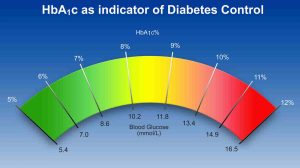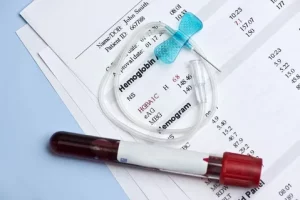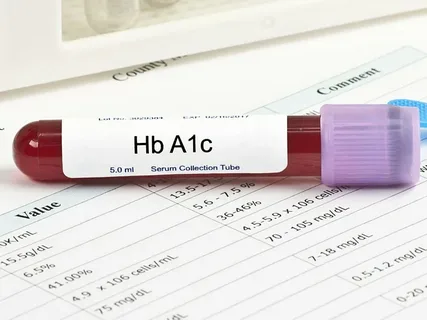Introduction High A1C levels not only signal a potential risk for diabetes but also serve as indicators of associated complications. The management of A1C levels is a critical aspect of diabetes care. In this comprehensive guide, we delve into the intricacies of A1C, its measurement, understanding different levels, potential complications, goal setting, and effective strategies
Introduction
High A1C levels not only signal a potential risk for diabetes but also serve as indicators of associated complications. The management of A1C levels is a critical aspect of diabetes care. In this comprehensive guide, we delve into the intricacies of A1C, its measurement, understanding different levels, potential complications, goal setting, and effective strategies to lower A1C.
What is A1C and How Does it Work?
A1C is a blood test measuring sugar attached to hemoglobin, reflecting average blood glucose over 3 months.
- Purpose: Checks and monitors diabetes status, providing insights into glucose control.
- Testing Frequency: Typically done every 3 months without fasting, offering convenience.
- Indicator: Higher A1C percentage suggests prolonged high blood sugar periods.
- Diagnostic Tool: Essential for diabetes management, complements regular blood sugar testing.
- Terms: A1C and estimated average glucose (eAG) are interchangeably used.
- Convenience: No specific preparations needed, can be performed at any time.
- Monitoring: Crucial for assessing treatment plan effectiveness in individuals with diabetes.

Image by: yandex.com
Understanding A1C Levels
A doctor may interpret A1C levels alongside estimated average glucose (eAG). Both metrics represent a person’s average 3-month blood glucose levels. However, setting A1C targets involves considering various factors. A comparative table offers a glimpse into potential targets for different scenarios, emphasizing the nuanced approach required.
| A1C Value | eAG Value | Potential Targets |
|---|---|---|
| 5.6% or below | 117 mg/dl or below | Healthy adults without diabetes |
| 6.5% | 140 mg/dl | People with short-term diabetes, managed type 2 diabetes, no cardiovascular disease, long life expectancy |
| 7% or less | 154 mg/dl or less | Most non-pregnant adults with diabetes |
| 8% or less | 183 mg/dl or less | People with long-standing or severe diabetes, limited life expectancy, extensive additional health complications, or poor treatment response |
Complications of High A1C
- Risk Indicator: High A1C levels serve as a red flag, indicating an elevated risk of complications related to diabetes.
Potential Complications:
-
- Kidney Disease: Prolonged high blood sugar levels can lead to kidney issues.
- Eye Disease: Increased risk of eye-related complications.
- Cardiovascular Issues: Higher A1C correlates with a greater risk of strokes and cardiovascular diseases.
- Metabolic Syndrome: A cluster of conditions increasing the risk of heart disease, stroke, and type 2 diabetes.
- Neuropathy: Nerve damage, particularly affecting the extremities.
- Concern for Non-Diabetics: For individuals without a diabetes diagnosis, high A1C levels suggest a potential development of the condition without interventions.
- Prompt Action Needed: Recognizing the complications associated with elevated A1C emphasizes the importance of timely intervention and diabetes management.

Image by: yandex.com
Setting and Achieving A1C Goals
A personalized approach is key to setting A1C goals. A diabetes care team considers factors such as current A1C levels, individual health conditions, and upcoming tests. While maintaining a healthy range is the overarching goal, adjustments may be necessary based on individual circumstances, reinforcing the need for regular monitoring and flexibility in goal setting.
Tips to Lower A1C
- Medication Review: Consult with a doctor for medication adjustments.
- Regular Exercise: Engage in physical activity to utilize glucose and lower blood sugar.
- Healthy Diet: Adopt a balanced, whole-foods-based diet with controlled carbs.
- Smoking Cessation: Quit smoking to improve overall health and blood flow.
- Education Courses: Attend diabetes education courses for effective management strategies.
- Consult with Doctor: Discuss lifestyle changes with healthcare professionals.
- Weight Management: Achieve and maintain a healthy weight for improved blood sugar.
- Regular Monitoring: Track blood sugar levels at home for insights into lifestyle effectiveness.

Image by: yandex.com
Conclusion
The A1C test stands as a vital diagnostic tool, offering a comprehensive view of blood sugar levels over an extended period. By understanding the nuances of A1C and implementing effective management strategies, individuals can not only reduce the risk of diabetes complications but also work towards a healthier and more fulfilling life. Regular communication with healthcare professionals remains integral in this journey towards optimal diabetes care and overall well-being.

















Leave a Comment
Your email address will not be published. Required fields are marked with *